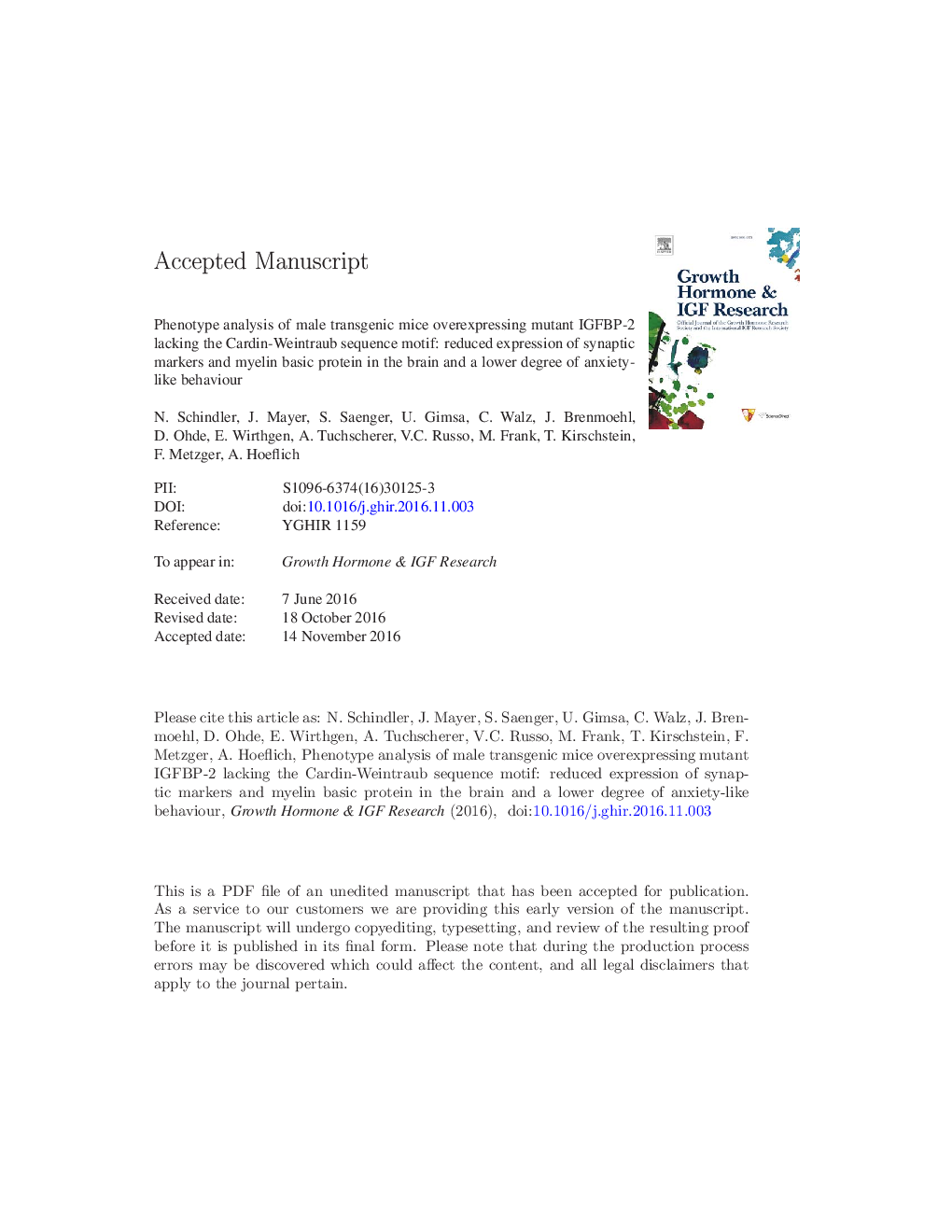| Article ID | Journal | Published Year | Pages | File Type |
|---|---|---|---|---|
| 5587904 | Growth Hormone & IGF Research | 2017 | 32 Pages |
Abstract
Brain growth and function are regulated by insulin-like growth factors I and II (IGF-I and IGF-II) but also by IGF-binding proteins (IGFBPs), including IGFBP-2. In addition to modulating IGF activities, IGFBP-2 interacts with a number of components of the extracellular matrix and cell membrane via a Cardin-Weintraub sequence or heparin binding domain (HBD1). The nature and the signalling elicited by these interactions are not fully understood. Here, we examined transgenic mice (H1d-hBP2) overexpressing a mutant human IGFBP-2 that lacks a specific heparin binding domain (HBD1) known as the Cardin-Weintraub sequence. H1d-hBP2 transgenic mice have the genetic background of FVB mice and are characterized by severe deficits in brain growth throughout their lifetime (p < 0.05). In tissue lysates from brain hemispheres of 12-21 day old male mice, protein levels of the GTPase dynamin-I were significantly reduced (p < 0.01). Weight reductions were also found in distinct brain regions in two different age groups (12 and 80 weeks). In the younger group, impaired weights were observed in the hippocampus (â 34%; p < 0.001), cerebellum (â 25%; p < 0.0001), olfactory bulb (â 31%; p < 0.05) and prefrontal cortex (â 29%; p < 0.05). At an age of 12 weeks expression of myelin basic protein was reduced (p < 0.01) in H1d-BP-2 mice in the cerebellum but not in the hippocampus. At 80 weeks of age, weight reductions were similarly present in the cerebellum (â 28%; p < 0.001) and hippocampus (â 31; p < 0.05). When mice were challenged in the elevated plus maze, aged but not younger H1d-hBP2 mice displayed significantly less anxiety-like behaviour, which was also observed in a second transgenic mouse model overexpressing mouse IGFBP-2 lacking HBD1 (H1d-mBP2). These in vivo studies provide, for the first time, evidence for a specific role of IGFBP-2 in brain functions associated with anxiety and risk behaviour. These activities of IGFBP-2 could be mediated by the Cardin-Weintraub/HBD1 sequence and are altered in mice expressing IGFBP-2 lacking the HBD1.
Related Topics
Life Sciences
Biochemistry, Genetics and Molecular Biology
Endocrinology
Authors
N. Schindler, J. Mayer, S. Saenger, U. Gimsa, C. Walz, J. Brenmoehl, D. Ohde, E. Wirthgen, A. Tuchscherer, V.C. Russo, M. Frank, T. Kirschstein, F. Metzger, A. Hoeflich,
